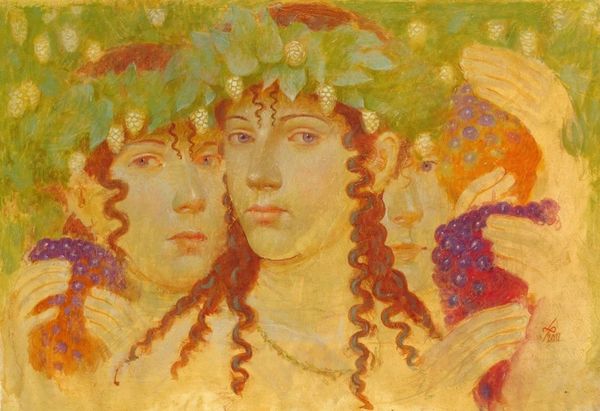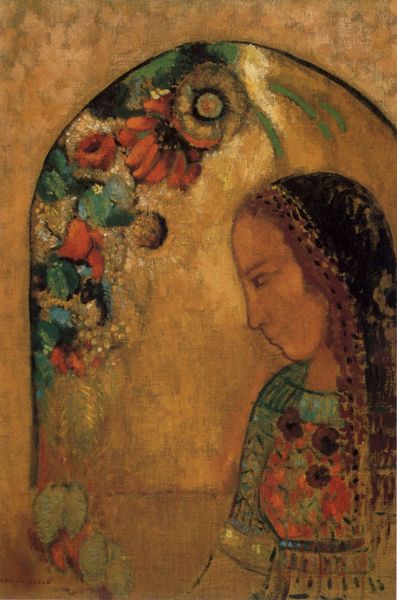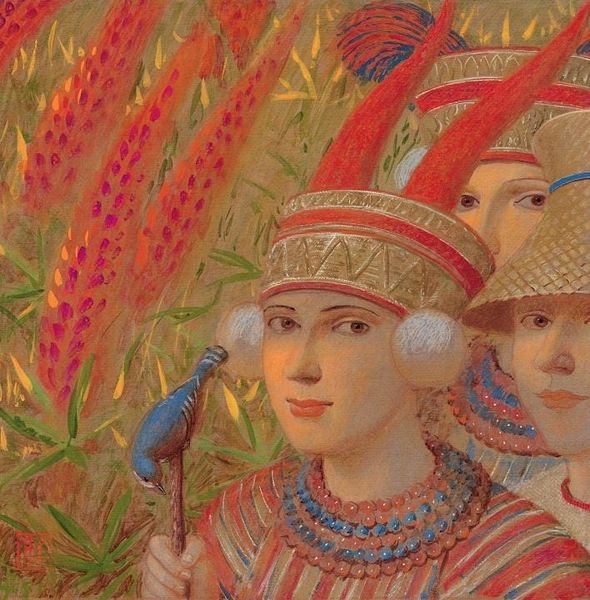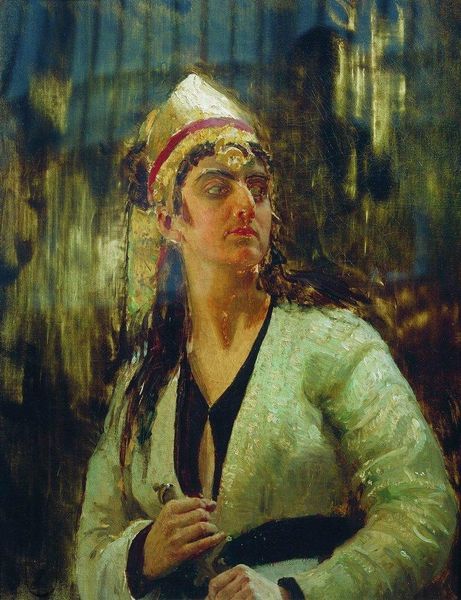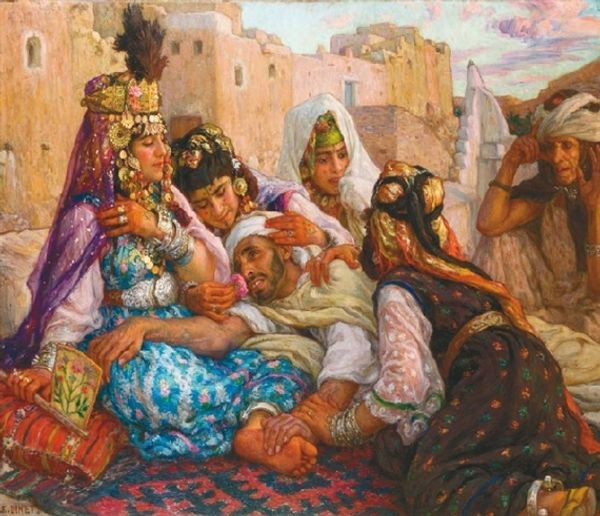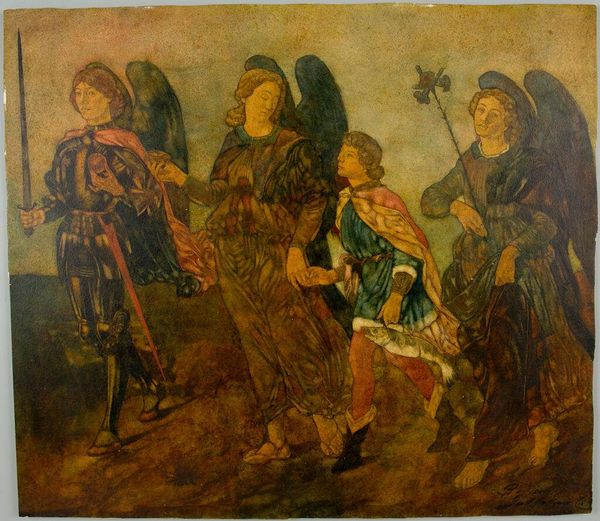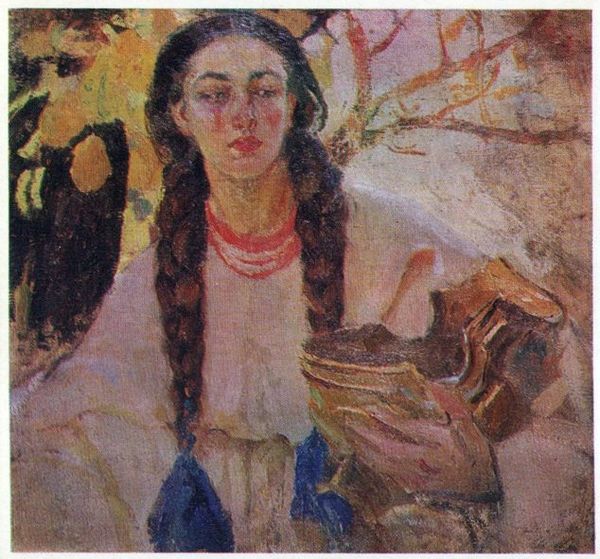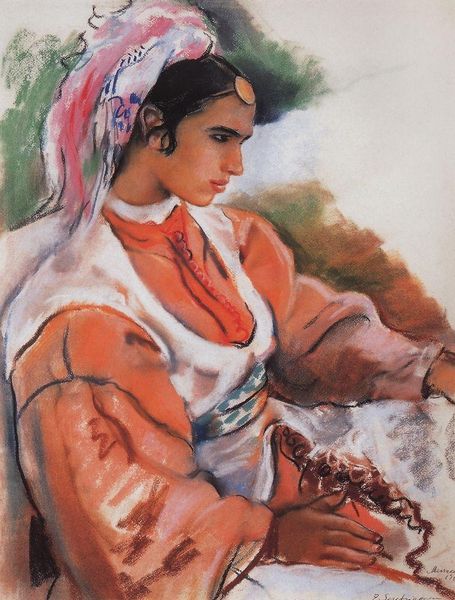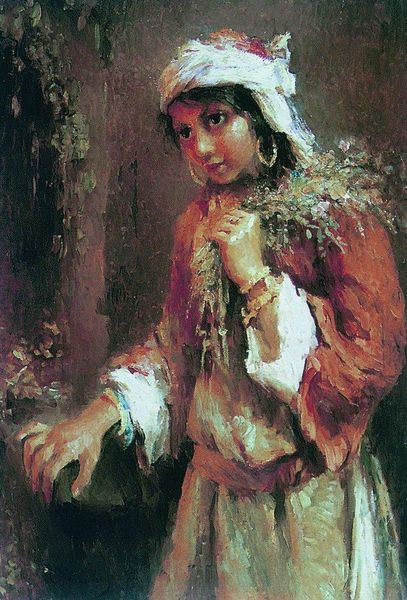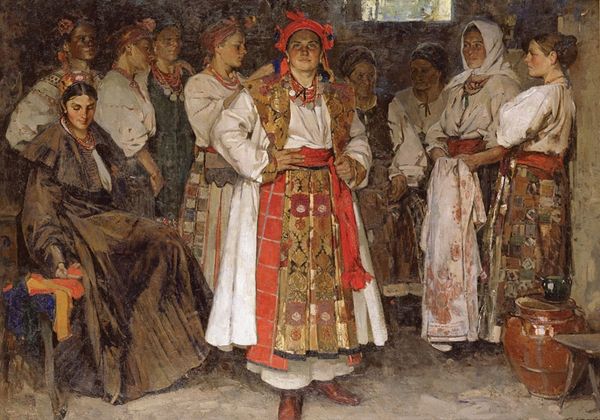
oil-paint
#
portrait
#
acrylic
#
oil-paint
#
figuration
#
oil painting
#
group-portraits
#
genre-painting
#
modernism
#
realism
Copyright: Public domain
Curator: This is "Three Ages" from 1913, created with oil paint by the Ukrainian artist Fedir Krychevsky. It now resides in the Sumy Museum of Fine Arts in Ukraine. Editor: My initial reaction is to the textural quality of the painting's surface, how tactile it appears. I wonder about the labor that went into building those impasto layers, especially in the women’s head coverings. Curator: Krychevsky’s layering definitely enhances the symbolism inherent in the image, showing us not just individuals, but representative figures within Ukrainian culture and the circle of life. Note how their gaze avoids direct engagement, maintaining a sense of both presence and symbolic representation. Editor: Exactly. Thinking about the materials, particularly the pigment – was Krychevsky using locally sourced colors, grounding this work in a specific geographical and economic reality? Were there choices available and how did these reflect the cultural landscape from which it came? Curator: We know that the symbol of motherhood and national identity resonated strongly within Ukrainian art of this era, especially given the ongoing struggle for autonomy. You can see how their faces, while distinct, blend into a unified presentation of womanhood through time. Editor: The creation of the linen canvas would also have entailed a lot of physical labor. These may have been a communal labor that brought groups of Ukrainian women together, each step representing its own history of collective actions of textile and folk arts. Curator: It brings to mind ancient visual narratives of mother-goddesses or ancestral lines in other cultural traditions, which may certainly carry significance in a Ukrainian context, too. Editor: I am captivated by the social implications within its mode of making: the cloth’s weaving, pigment sourcing, the mixing of paints, and the layering upon layering to represent lived experience, and its meaning on the landscape that the process would have emerged from. Curator: Ultimately, this painting captures a sense of cyclical continuity and a dignified depiction of women deeply embedded within a cultural heritage, regardless of the steps needed for its material creation. Editor: For me, analyzing its layers offers access points for deeper engagement with history, craft, labor, and material culture. It allows us to grasp something deeper than aesthetic consideration.
Comments
No comments
Be the first to comment and join the conversation on the ultimate creative platform.
